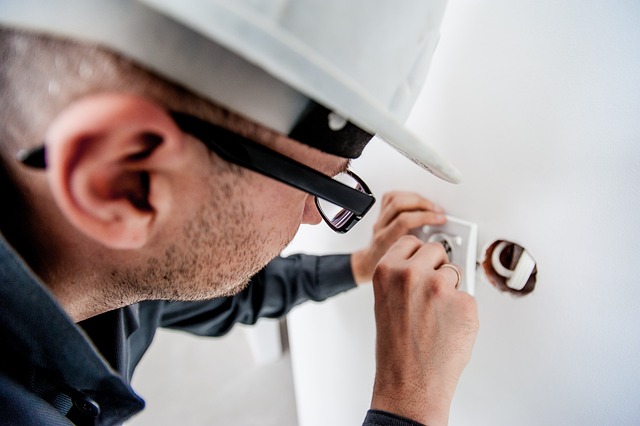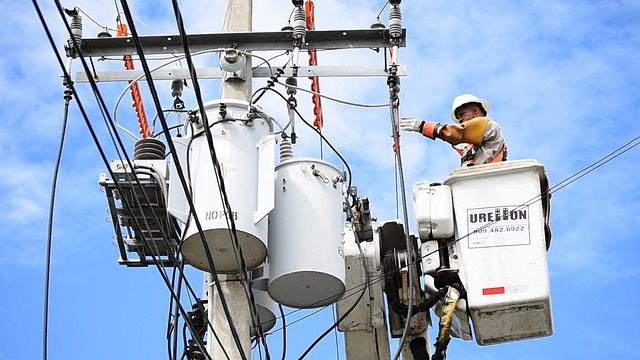Electrical issues, from minor flickering lights to major power outages, can pose significant safety risks in homes and businesses. Early identification is key; signs like tripped circuits indicate problems like overloads, faulty wiring, or loose connections. Common causes include outdated systems, damaged wires, and circuit overload. Prompt action by a qualified electrician is crucial for troubleshooting and preventing severe damage, ensuring safe and reliable electrical systems. Regular maintenance checks are essential to mitigate risks associated with aging wiring and high energy demands from modern appliances.
“Are you tired of flickering lights or unexpected power outages? Understanding and addressing common electrical malfunctions is crucial for every homeowner. This comprehensive guide walks you through identifying issues like tripped circuits and potential causes such as faulty wiring or outdated systems. Learn essential troubleshooting steps, from safety precautions to using a voltage tester.
Discover common fixes, when to tackle simple repairs yourself, and when to call a professional electrician for complex issues. Equip yourself with knowledge to navigate electrical problems effectively and safely.”
- Understanding Common Electrical Malfunctions
- – Identifying issues: tripped circuits, flickering lights, power outages
- – Potential causes: faulty wiring, overloaded circuits, outdated systems
Understanding Common Electrical Malfunctions

Electrical malfunctions can range from minor irritations to serious safety hazards, making it crucial for both homeowners and business owners to understand common issues. Familiarizing yourself with these problems is a significant first step towards effective troubleshooting. One of the most frequent malfunctions involves flickering lights, which could indicate loose connections or faulty wiring. Another prevalent issue is circuit breakers tripping frequently, often due to excessive electrical load or short circuits. These problems may seem simple, but they require attention from a qualified electrician to prevent more severe complications.
Power outages are also common, especially during adverse weather conditions. While these events are beyond individual control, understanding the causes and effects can help in rapid recovery. In many cases, a surge in electricity can damage appliances and electrical systems, leading to unexpected shutdowns or malfunctions. Knowing when to call an electrician is vital; professionals can identify issues like faulty outlets, broken switches, or outdated wiring that might go unnoticed but pose significant risks over time.
– Identifying issues: tripped circuits, flickering lights, power outages

Identifying electrical issues is a crucial step in troubleshooting and fixing malfunctions. Common signs like tripped circuits, for instance, indicate an overload or short circuit, requiring immediate attention from a qualified electrician. These trips often result in sudden power cuts to specific circuits or even entire homes, underscoring the importance of understanding and addressing the root cause.
Flickering lights, another frequent symptom, can signal various problems, such as faulty wiring, loose connections, or overloads. Power outages, while sometimes temporary, may be indicative of more severe issues within the electrical system. Prompt identification of these problems is essential to prevent further damage and ensure the safety of residents and property.
– Potential causes: faulty wiring, overloaded circuits, outdated systems

Electricity-related issues can stem from various sources, and understanding these potential causes is crucial for anyone aiming to troubleshoot and fix electrical malfunctions. One of the most common culprits is faulty wiring. Over time, wires can become damaged, frayed, or loose, leading to poor connections and power surges that may cause appliances to malfunction or even catch fire. Outdated systems are another significant factor; older homes or devices with outdated electrical components might not be equipped to handle modern appliances’ high energy demands, resulting in frequent breakdowns.
Additionally, overloaded circuits can trigger a range of problems. When too many appliances are plugged into a single circuit, it can cause overheating and potentially lead to tripped breakers or blown fuses. This issue is often overlooked but can be a significant contributor to electrical malfunctions, emphasizing the importance of regular maintenance checks by a qualified electrician.
Troubleshooting and fixing electrical malfunctions requires a thorough understanding of common issues and their root causes. By identifying problems like tripped circuits, flickering lights, or power outages, and attributing them to faulty wiring, overloaded circuits, or outdated systems, homeowners can effectively address minor issues themselves or know when to call a professional electrician for more complex repairs. Regular maintenance and staying informed about potential causes are key to preventing future electrical malfunctions.
